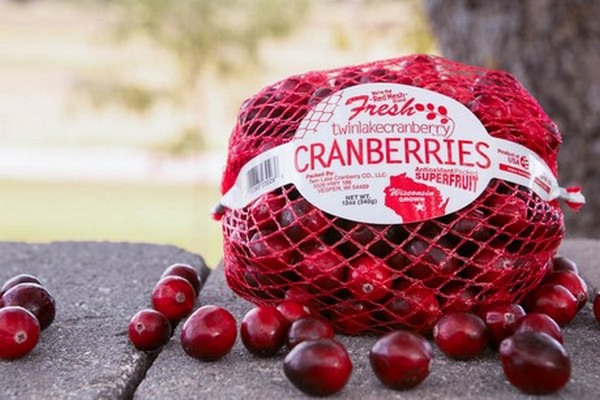This season’s fresh cranberry crop had additional pressures.
“2021 threw us some curve balls that we were prepared to knock out of the park. We were blessed with a great seasonal team, a solid crop, great customers and a logistics team that managed through what was a very tight market. We wrapped up the season with supply to cover all our accounts plus some latecomers in what was one of the tightest years I can remember in the fresh cranberry industry,” says Kevin Tritz of Twin Lake Cranberry in Vesper, WI.
He adds that the industry as a whole was fairly short on supplies. “We fielded a lot of phone calls from a lot of folks looking to buy whatever cranberries might be out there. Internally we had supply for our existing customers and were able to supply some new ones with product. But the shortage had to have been significant because we had big players calling looking for quite a lot of fruit,” he says.
While weather can be a factor contributing to a shortage--hail for example can devastate a cranberry crop--the industry is generally able to offset small events with other growers/fields. “One grower would get hit by hail and another has a bumper crop. We are fortunate that way,” says Tritz.

At the same time, demand has continued to be strong for fresh cranberries this year. “Last year demand was up and that carried over to this year. And compared to three years ago, it’s a significant demand increase,” he says.
Processing demands
At the same time, processed cranberries are also coming out of a decade of oversupply. “A couple of short crops in a row, coupled with COVID driving juice and SDC sales, has helped chip away at the oversupply. I haven’t seen official numbers on the processed side to determine if that market will be as tight as the fresh industry was, but it’s not entirely off the table,” says Tritz.
That said, pricing on fresh cranberries has remained stable for 2021. “It will have to move at some point. We fight hard with our suppliers to keep pricing consistent but we’re seeing double-digit increases on inputs year over year for the last two years,” says Tritz.
To help meet the demand on cranberries, a number of new varieties will be seen in the coming years. “Cranberries take three years to start producing. Recently new, high yield varieties have found their way into the ground after having proven themselves over the last decade. People are pulling out old vines and putting in new high yield vines. In a lot of cases production doubles or even triples,” he says, adding that often the new high-yield varieties are not suited for fresh cranberry production given that fresh cranberries typically call for a heartier berry with a strong shelf life.
 For more information:
For more information:
Kevin Tritz
Twin Lake Cranberry
Tel: +1 (715) 569-4595
kevin@twinlakecranberry.com
https://www.twinlakecranberry.com/
